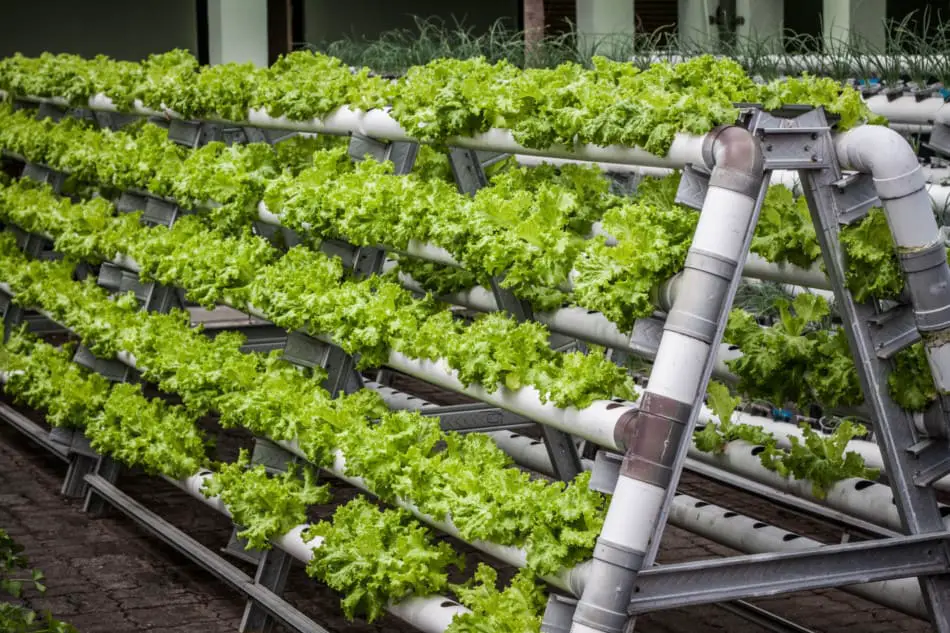Ashiq Hussain, a 28-year-old electrician from Kander Mohalla Saidakadal, stands proudly beside what looks like an elaborate plumbing project gone rogue.
Ten PVC pipes, arranged in neat vertical rows, sprout vibrant greens from circular holes. “This is the future of farming,” he beams, plucking fresh spinach leaves from his 3×6 feet hydroponic setup.
Like many Kashmiris, Hussain had long resigned to purchasing vegetables from the market, constrained by the region’s limited agricultural space. That changed few months ago when he discovered hydroponics—a soilless farming technique that’s rapidly gaining popularity across the Valley.
“I learned that I didn’t need vast lands or farming experience,” Hussain explains, adjusting the motor that circulates nutrient-rich water through his system. “With just these pipes and some basic knowledge, I could grow enough vegetables to feed my entire family.”
For a one-time investment of R 25,000, Hussain built a system that now produces a steady supply of spinach, collard greens, coriander, and mint. “We’ve harvested collard greens four times already,” he says, demonstrating how the nutrient-rich water circulates through the pipes, nourishing the plants’ exposed roots. “In traditional farming, this much produce would require at least ten times the space.”
The economics make sense for urban dwellers. The initial setup costs are recovered through reduced grocery bills, and the system’s efficiency means minimal ongoing expenses. Most crops are ready for harvest within 45 days, ensuring a consistent supply of fresh produce.
The trend is catching fire across Kashmir, largely thanks to social media. Arshid Ahmad Wani, a government employee from Soura, stumbled upon images of Hussain’s setup online and was immediately intrigued. “As someone working a full-time job, I never thought farming could fit into my schedule,”
he says. “But this system only needs 20-30 minutes of attention daily.”
Similarly, Adil Ahmad from Srinagar’s Rainawari area invested Rs 30,000 in his hydroponic setup after seeing success stories online. “The non-availability of land was restricting me from growing vegetables,” he shares. “Now, I can not only grow fresh produce for my family but also share it with relatives and friends.”
Government Support and Technical Innovation
The Jammu & Kashmir Agriculture Department has thrown its weight behind the movement. “We’re seeing a surge in interest, particularly from urban residents,” said a senior official.
The beauty of hydroponics is its accessibility—anyone with a small courtyard or even a balcony can become a farmer.”
The department provides technical guidance to newcomers, helping them understand the nuanced balance of nutrients required for different crops. “Plants receive essential nutrients from a water-based solution containing nitrogen, potassium, calcium, and other vital elements,” Chowdhary explains. “The motor-driven system ensures efficient distribution of these nutrients.”
The technique’s benefits extend far beyond space efficiency. The closed system means we use significantly less water than traditional soil-based farming.
These vertical farms offer unique advantages in a region known for its harsh winters. The systems can be easily protected from snowfall or moved indoors, ensuring year-round production regardless of weather conditions. Additionally, the absence of soil eliminates common agricultural challenges like weeding and soil-borne diseases.
As evening descends over the Valley, Hussain performs his daily routine of checking water levels and nutrient concentrations. In neighboring houses, more PVC gardens are beginning to appear, their green shoots reaching skyward—a testament to human ingenuity and the enduring desire to grow one’s own food, even in the most unlikely spaces.
“Every time I serve these vegetables to my family,” Hussain says, holding up a bunch of freshly harvested greens, “I’m reminded that limitations are often just opportunities in disguise. This isn’t just about growing food—it’s about proving that anyone can become self-sufficient with the right tools and knowledge.”
The hydroponic revolution in Kashmir represents more than just a new way of farming—it’s a paradigm shift in how urban communities think about food production. As more success stories emerge, these vertical gardens may well become as common as traditional kitchen gardens once were, offering a sustainable solution to urban food security while proving that sometimes, the best innovations are the simplest ones.

